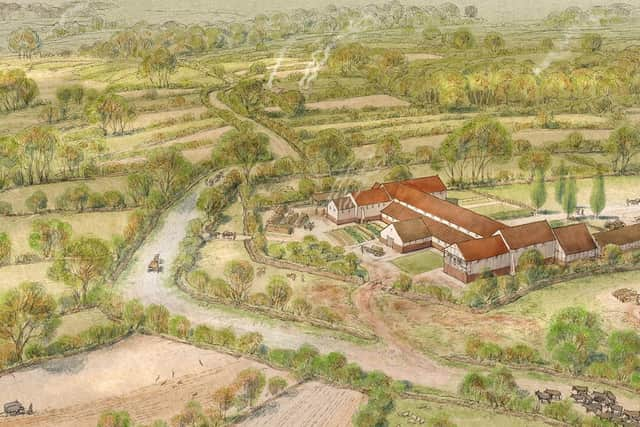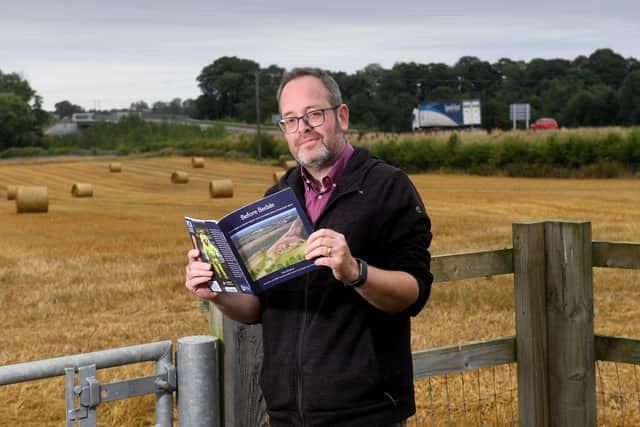95 per cent of Roman villa in North Yorkshire field is yet to be uncovered reveals archaeologist


The fascinating story of how archaeologists discovered the villa – which was so significant that it was preserved as a scheduled monument – is told in a new booklet from North Yorkshire County Council.
The villa was found in 2014 ahead of work on the A684 Bedale, Aiskew and Leeming Bar bypass by a team from Pre-Construct Archaeology.
Advertisement
Hide AdAdvertisement
Hide AdNYCC’s principal archaeologist Peter Rowe said: “They’d done some trial trenches which suggested there was some kind of Roman building, but they had no idea it was a high-status Roman villa. Talking to people there at the time, it was a surprise, it was a shock.”


One room, a “bolt on” to a large complex, with at least 11 rooms on the ground floor alone, was excavated and turned out to be a bathhouse fitted with a hypocaust central heating system, glazed windows and waterproof concrete flooring.
As the booklet puts it “villa buildings were marvels of Roman civil engineering” and the bathhouse would have been a “comfortable and convivial space in which to bathe and entertain guests” – even in a North Yorkshire winter.
As well as mosaic floors, colourful wall paintings adorned many of the rooms, a combination which may look gaudy to the modern eye but were the best of Roman taste. Animal bones suggested a “rich and varied” diet while fragments of large clay amphora suggested its late Roman inhabitants dined on imported food including olive oil from Spain and fish sauce from Tunisia.
Advertisement
Hide AdAdvertisement
Hide AdWhile it is unlikely that the council would have the funding to excavate the remainder of the villa, it remains a tantalising prospect for researchers to return to one day, said Mr Rowe, with around 95 per cent still to uncover.


“The bypass was actually moved slightly from the original line to preserve as much as possible. We have only just tickled the Roman villa itself – at the end of the day it is one of the most northerly preserved villas in the Empire.
“Only one room has been excavated and the rest of it recorded in plan, so we have seen perhaps five per cent of the overall villa. There is still this fantastic archaeological resource beneath the fields, which one day might give up its secrets.”
It’s a far cry from the Iron Age enclosure uncovered at Bedale around 1km away during the excavations, which was connected to the villa by a roadway – a precursor of the modern bypass. Surrounded by a ditch, with a roundhouse inside, it may have been used in connection with the seasonal moving of herds of cattle.
Advertisement
Hide AdAdvertisement
Hide AdMr Rowe said there was a “massive contrast” from people living in wattle and daub buildings and everybody sharing a central space, to how the Romans lived, in storeyed buildings with a water supply and heating “that wasn’t just a fire in the centre of the room”.


“It’s very modern. There’s all sorts of questions, who lived there and who could afford it?”
The answer is probably a member of the regional elite, with good political and business connections in nearby towns and military garrisons, the booklet suggests.
The villa was just 32km north of the Roman town at Aldborough and 20km from a large Roman military camp at Brough Hill, Bainbridge, which housed men of the Sixth Cohort of Nervians, an auxiliary unit raised in the area of modern day Belgium.
The booklet, Before Bedale is available to the public from the libraries in Bedale and Northallerton and also on the council's website in the archaeology section.